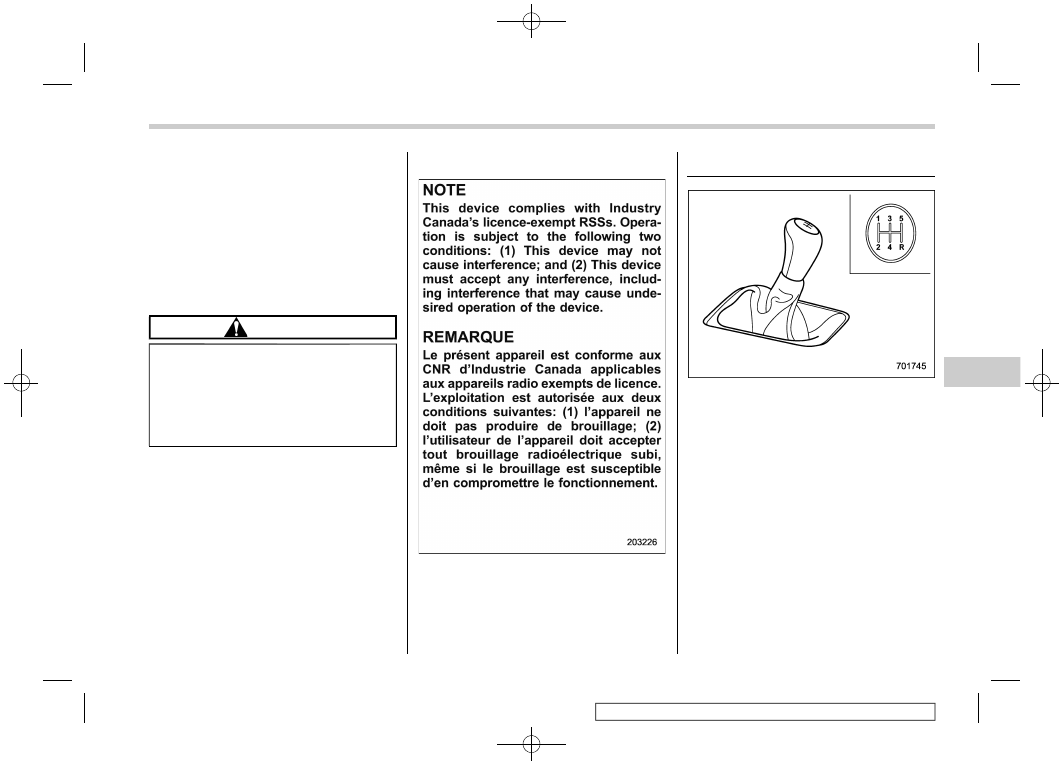Subaru Impreza (2019 year). Instruction - part 19

(299,1)
北米Model "A1350BE-A" EDITED: 2018/ 4/ 20
should be pointed away from the transmit-
ter circuit board on battery).
4. Carefully snap the case halves back
together, reinstall the phillips screw and
test the remote engine start system.
&
Certification for remote en-
gine starter
!
U.S.-spec. models
CAUTION
FCC WARNING
Changes or modifications not ex-
pressly approved by the party re-
sponsible for compliance could void
the user’s authority to operate the
equipment.
NOTE
This device complies with part 15 of the
FCC Rules. Operation is subject to the
following two conditions: (1) This de-
vice may not cause harmful interfer-
ence, and (2) this device must accept
any interference received, including
interference that may cause undesired
operation.
!
Canada-spec. models
Instruction transmission
The instruction transmission is a fully syn-
chromeshed, 5-forward-speed and 1-re-
verse-speed transmission.
The shift pattern is shown on the shift lever
knob. When shifting from 5th gear to
reverse gear, first return the shift lever to
the neutral position then shift into reverse
gear.
To change gears, fully depress the clutch
pedal, move the shift lever, and gradually
let up on the clutch pedal.
If it is difficult to shift into gear, put the
transmission in neutral, release the clutch
pedal momentarily, and then try again.
– CONTINUED –
Starting and operating/Instruction transmission
7-21
7